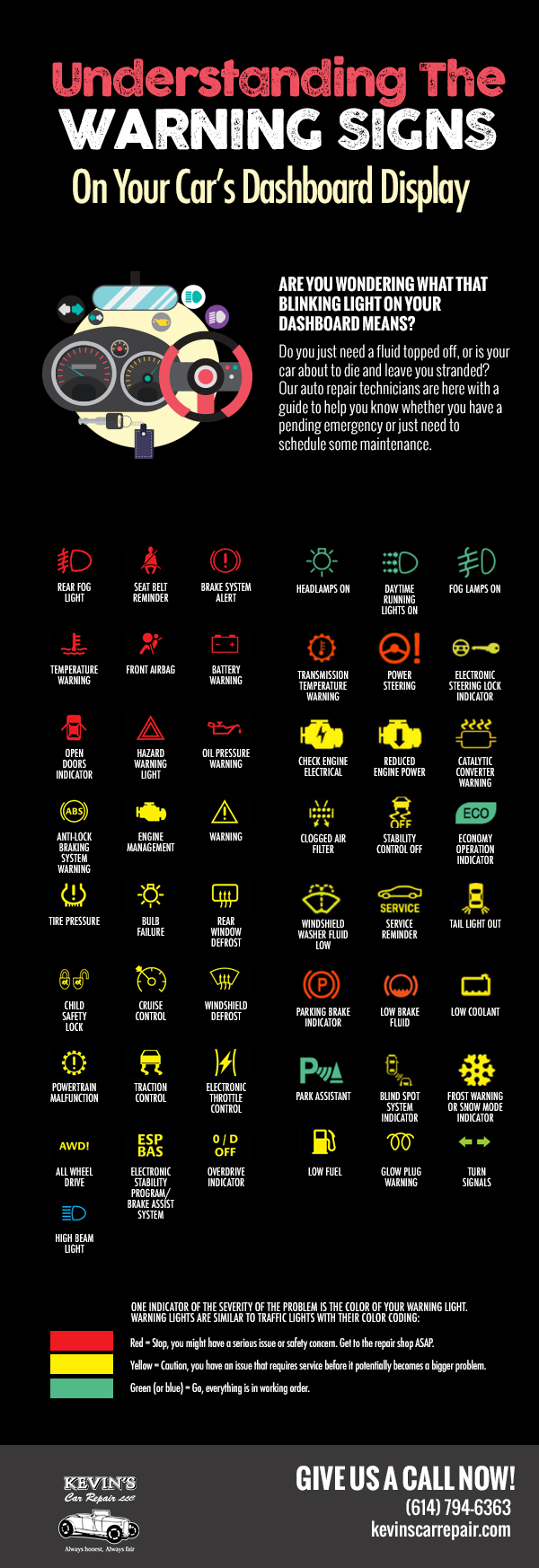Understanding Your Automobile'S Warning Lighting: What Do They Really Mean?
Understanding Your Automobile'S Warning Lighting: What Do They Really Mean?
Blog Article
Written By-Sykes Kejser
When you lag the wheel, those glowing caution lights on your control panel can be a bit complicated. Do you know what they're attempting to inform you concerning your car's wellness? Recognizing the relevance of these lights is important for your safety and the long life of your vehicle. So, the next time one of those lights turns up, wouldn't you wish to analyze its message accurately and take the essential actions to resolve it?
Common Caution Lighting and Interpretations
Recognize usual caution lights in your automobile and recognize their significances to make certain secure driving.
One of the most typical caution lights include the check engine light, which indicates issues with the engine or exhausts system. If this light begins, it's essential to have your automobile inspected quickly.
The oil stress warning light suggests low oil stress, calling for prompt focus to prevent engine damages.
car cut and polish flashing battery light may suggest a defective billing system, potentially leaving you stranded if not addressed.
The tire stress tracking system (TPMS) light alerts you to low tire pressure, affecting vehicle stability and fuel efficiency. Overlooking this might result in risky driving conditions.
The abdominal muscle light shows an issue with the anti-lock braking system, endangering your ability to stop promptly in emergency situations.
Finally, motorcycle detailing auckland alerting light warns of engine getting too hot, which can cause serious damage otherwise settled promptly.
Comprehending these common caution lights will help you attend to concerns immediately and keep safe driving problems.
Relevance of Prompt Focus
Comprehending the usual warning lights in your car is just the initial step; the value of quickly dealing with these warnings can not be emphasized enough to guarantee your safety when driving.
When a warning light brightens on your control panel, it's your cars and truck's way of connecting a possible issue that needs interest. Overlooking these cautions can result in much more serious problems later on, compromising your safety and potentially costing you a lot more out of commission.
Trigger attention to alerting lights can protect against break downs and accidents. For instance, a blinking check engine light might indicate a misfire that, if left ignored, might trigger damage to the catalytic converter. Addressing this quickly can save you from a costly repair.
Likewise, a brake system cautioning light could signal low brake liquid or worn brake pads, critical parts for your safety when driving.
DIY Troubleshooting Tips
If you discover a caution light on your dashboard, there are a few do it yourself troubleshooting suggestions you can try before looking for specialist help.
https://brakechange29406.bloggip.com/30321522/necessary-gear-for-every-single-auto-repair-company-to-run-successfully is to consult your automobile's guidebook to comprehend what the certain warning light indicates. Often the concern can be as straightforward as a loosened gas cap triggering the check engine light. Tightening up the gas cap might solve the trouble.
An additional typical problem is a low battery, which can cause different alerting lights. Examining the battery connections for corrosion and ensuring they're protected may take care of the issue.
If a warning light lingers, you can attempt resetting it by detaching the vehicle's battery for a few mins and after that reconnecting it. Furthermore, checking your automobile's fluid degrees, such as oil, coolant, and brake liquid, can aid troubleshoot cautioning lights connected to these systems.
Conclusion
In conclusion, comprehending your automobile's warning lights is necessary for keeping your car running smoothly and safely. By without delay attending to these signals and understanding what they mean, you can avoid expensive repair services and possible malfunctions.
Keep in mind to consult your cars and truck's guidebook for particular details on each cautioning light and do something about it accordingly to make certain a hassle-free driving experience.
Keep informed, remain secure on the road!
